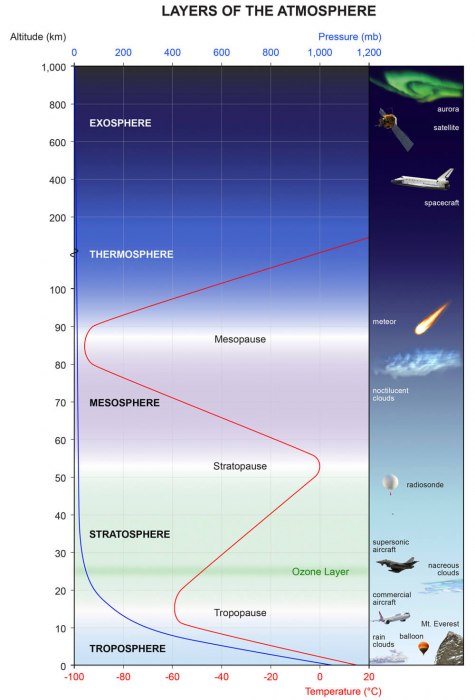An interesting commentary, especially in light of the generations of Econ profs admonishing against putting much weight on headline inflation, as food and energy prices are volatile and should be stripped out to reveal core CPI and PPI trends.
From the Federal Reserve Bank of St. Louis, January 1, 2002:
"When I was your age, I walked 20 miles uphill in the snow to get to
school and a gallon of milk only cost a nickel."Who doesn't remember
grandparents and relatives sharing similar stories with us at family
get-togethers? Today, a gallon of milk at the grocery store will cost
more than a nickel, as will other goods that our grandparents paid
considerably less for in their day. The overall rise in prices is known
to economists as inflation.
Over the long run, inflation is caused by too much growth in the
money supply. Monetary inflation is bad because it obscures the price
signals that make our market system work efficiently. The job of
monetary policy is to supply just the right amount of money so that the
average price level remains stable.
Over short periods, however, inflation can be influenced by large
changes in the market for particular goods and services. Because these
bouts of inflation tend to be short-lived and self-correcting, the
proper monetary policy response is to ignore them. The problem for the
Federal Reserve is to know when inflation is due to excessive monetary
growth (requiring a policy response) and when it is due to transitory
market fluctuations. To sort out the short-run real effects caused by
disruptions to particular markets from the long-run monetary effects
caused by Federal Reserve policy, economists have developed techniques
to filter the inflation news. Traditionally, economists have excluded
food and energy prices in their filtering process, but we find that
by filtering out food prices, we might be losing valuable information
about inflation.
What's in the Basket?
Economists looking at inflation generally track a price index, which
is the average price of a consistent "basket" of consumer goods. The two
major price indexes are the Consumer Price Index (CPI) and the Personal
Consumption Expenditures Price Index (PCEPI).
The CPI, reported by the Bureau of Labor Statistics, was created for
the specific purpose of adjusting veterans' pension benefits for
inflation following WWI, while the PCEPI, reported by the Bureau of
Economic Analysis, is used to compute the nation's Gross Domestic
Product. Both indexes measure the rate of inflation faced by consumers,
but the PCEPI is more comprehensive.
Approximately 25 percent of the items in the PCEPI basket are
excluded from the CPI basket. A guiding principle for deciding whether
an item belongs in the CPI basket is whether it is paid for "out of
pocket." The main items in the PCEPI that are not included in the CPI
are things that consumers get but don't pay for out of pocket, such as
free checking, employer-funded medical care and medical services paid
through Medicare and Medicaid. Also, the CPI is an index of inflation
for urban dwellers; so, it excludes spending by rural households.
The PCEPI, then, is a larger and broader index that includes a more
varied bundle of goods than the CPI does. Although both are valid for
gauging inflation, in 2000 the Federal Reserve began reporting its
inflation forecasts in terms of the PCEPI instead of the CPI. Because of
the PCEPI's wider basket of goods and the Fed's focus on it, we'll look
only at the PCEPI, although our conclusions also apply to the CPI.
When tracking inflation, people monitor data releases to predict the
underlying inflation trend, which is driven solely by monetary policy.
However, information about the inflation trend has been compared to a
radio signal that is obscured by static. Just as noise filters are used
to remove the static in radio signals, economists filter inflation data
to remove the static caused by supply and demand changes. One way to
filter the inflation news is to measure the change in prices over a
long period, such as a year, to eliminate the short-run fluctuations.
But then, the useful information is delayed for a year.
Another way that economists filter out the static is to delete the
items in the price index that are sensitive to large, frequent
disturbances to supply and demand and, therefore, have highly volatile
prices. After deleting these items, what is left is core inflation,
that is, inflation in the basket of goods excluding the more volatile
components. Since the 1970s, core inflation has typically been measured
by excluding food and energy from the basket of goods. This is because
the early 1970s saw highly volatile food prices and, soon afterward, a
rapid rise in the prices of gas, oil and other energy products.
The core measure of inflation, the PCEPI excluding food and energy,
has been less sensitive to temporary shocks to the economy and has
seemed to have been a better barometer of the underlying trend in
inflation than the all-item PCEPI. Looking at Figure 1,
we see that the rate of inflation measured by the PCEPI excluding food
and energy has been less volatile than with the all-item index. During
times of high inflation, such as the mid-1970s and early 1980s, the
PCEPI excluding food and energy did not increase nearly as much as the
all-item PCEPI.When inflation dropped considerably in the middle of
1986, the index excluding food and energy did not show the same massive
drop.
Let's take a closer look at the changes in the prices of components excluded from the core: food and energy. From Figure 2,
we see that inflation in energy prices indeed has been very volatile,
increasing and decreasing much more than the food component or the
all-item PCEPI. We also see that food prices have become increasingly
stable recently, while energy prices continue to fluctuate
significantly.
What has caused the recent increase in the stability of food prices?
Improvements in technology and a change in consumer eating habits have
both contributed.
Major advancements in the food distribution system have led to shorter
lag times between picking produce at the farm and getting it into the
hands of urban consumers. It is not unusual, as it once was, for a
shopper in a supermarket in Chicago to be buying fresh produce grown in
South America. As technological advances have reduced the cost of air
freight and refrigeration, their use has become widespread and
commonplace in the food industry, increasing the geographic size of the
market for food and reducing the volatility of food prices.
Another change in the food distribution system is that many more
people now buy their food from large grocery store chains. These large
chains have an advantage over smaller specialty retailers in that they
have the ability to stock larger quantities of many more different types
of items. Large supermarkets purchase food directly from the producers
in huge quantities, cutting the cost to themselves and their consumers.
Eating habits of the American consumer also have changed. With the
hectic schedule many Americans have, people are less inclined to buy
fresh fruit, vegetables, meat and poultry that may go bad in their
refrigerators or require time and energy to prepare. People are much
more likely to buy prepared meals at the grocery store or to eat at
restaurants. The prices that consumers pay for these meals are largely
expenditures on the labor used to prepare and serve the food. The price
of these labor services is less volatile than is the price of the raw
food products.
Should We Put Food Back into the "Core" Basket?
Because volatility in food prices has dropped in recent years, does
it still make sense to exclude food from our measure of core
inflation? Are we losing information about the underlying trend in
inflation by removing such a stable component from the core? Indeed,
by excluding food prices in our traditional analysis of core
inflation, we lose more knowledge about the trend in inflation than
we gain....









 Around
1900, Scott Nearing was introduced to The Landlord's Game by either
Lizzie Magie or other residents of Arden. He was at the time a full-time
resident of Arden. Nearing went on to become a member of the economics
department at the University of Pennsylvania in 1906, where he used The
Landlord's Game in his teaching. His support of Henry George's proposals
to raise pubic revenue exclusively from those who owned land, and his
opposition to child labor, caused him to be dismissed from the
university in 1915.
Around
1900, Scott Nearing was introduced to The Landlord's Game by either
Lizzie Magie or other residents of Arden. He was at the time a full-time
resident of Arden. Nearing went on to become a member of the economics
department at the University of Pennsylvania in 1906, where he used The
Landlord's Game in his teaching. His support of Henry George's proposals
to raise pubic revenue exclusively from those who owned land, and his
opposition to child labor, caused him to be dismissed from the
university in 1915.


